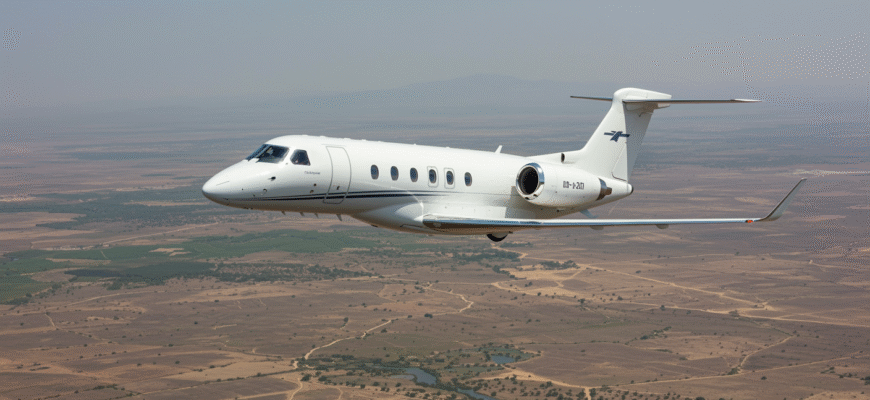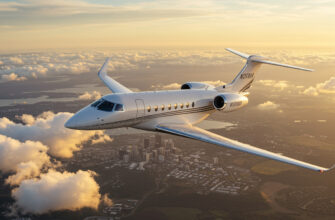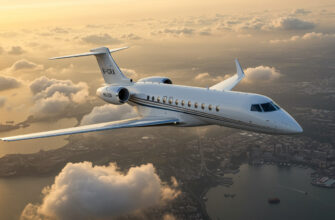Private jet charters in and out of Tanzania aren’t just about VIP treatment or skipping airport queues—though you absolutely get that too. They’re about something more unpredictable, more unfiltered. Imagine landing on a dirt runway where elephants casually delay your descent. Picture a Serengeti welcome where your plane doors open to wide-open wilderness, not a stuffy terminal. This is luxury with a serious wild side. It’s the kind of travel where logistics bend around your desires—even the ones you didn’t know you had.
Private Jet Charters In Tanzania—More Than Just A Ride
Flying private in Tanzania is part five-star experience, part “hold up, that’s a herd of buffalo on the airstrip.” It merges ultraluxe with tongue-in-cheek unpredictability. Every moment feels big—from your aircraft nose-diving into raw landscape beauty to being greeted post-landing with cold champagne and a lodge ambassador holding up a handwritten welcome sign.
It’s not rare for pilots to radio in animal positions before touchdown. Red-dirt runways in parks like Ruaha and Serengeti don’t come with high-tech navigational systems—they come with zebra crossings of a different kind. And for those staying at lodges like Singita or Grumeti, immigration isn’t something to be endured; it happens jet-side, mid-laugh, before you’re whisked away into the savannah.
Nothing about this feels routine—and that’s the point. Depending on season and airstrip conditions, your jet could be a Gulfstream, but your final hop? A helicopter wobble right into the bush.
Who Flies Private Here—And Why
This isn’t just for oil tycoons and A-list celebrities (though they’re definitely on the list). The jet scene in Tanzania draws all kinds of travelers, often with wildly different reasons.
- Royals and heads of state—for whom discretion isn’t optional
- Billionaire conservationists funding anti-poaching operations
- Straight-off-the-plane honeymooners wanting to skip every iota of chaos between the altar and their canopy bed
- Luxury safari groups, chartering entire planes just to shave travel time
- High-confidentiality entertainers—no press, no pictures, zero drama
Why they do it breaks down into three things: privacy, time, and trust. When you’re shelling out tens of thousands of dollars, yes, you want Veuve Clicquot chilled at altitude—but more than that, you want control. No baggage scavenger hunts. No wasted hours. No commercial flight roulette.
When Time Is Actually The Most Expensive Thing
Try spending two hours waiting in line at DAR while masked paparazzi snap photos. Now compare that to flying private—customs officers walking out to your aircraft door, stamping your passport while you’re still drying your hands on a monogrammed towel.
In Tanzania, time isn’t money—time is obscene money. Travelers easily shell out $200 per minute mid-season, just to avoid Julius Nyerere’s bottlenecks or navigating ground chaos at Kilimanjaro. And that cash isn’t about luxury alone—it’s buying predictability in an unpredictable place.
Consider this:
| Route | Commercial Travel Time | Private Charter Time |
|---|---|---|
| Arusha to Serengeti | 7–10 hours (road + delay) | 1–1.5 hours (direct airstrip) |
| Zanzibar to Mahale Mountains | Overnight hotel + 2 flights | 3.5 hours (jet to floatplane to lodge) |
Direct lodge-to-lodge transfers cut straight through the mess. Some charter packages even bundle in aerial guides and drones for lodge arrival shots—gone are layovers, lost luggage, or waiting for your driver to “arrive shortly.” Every moment is yours. You paid for it.
Beyond the Jet: Once You Land
Landing in Tanzania by private jet doesn’t mean your journey’s over. In some ways, it’s just beginning. What happens after touchdown can be just as luxe—and just as unpredictable. From lion delays to dirt runways, here’s what to expect once the jet hits ground.
Jet-Side Immigration & Lodge Transfers
Top safari lodges have syncing flight arrivals down to an art. Think immigration handled at your aircraft’s stairwell, not a crowded terminal. At places like Singita and Grumeti, a uniformed lodge guide often greets travelers right on the tarmac with a cool towel and an even cooler cocktail.
In select bush airports, especially in Serengeti or Manyara, lodges arrange everything—from customs clearance to lodge transfers—to happen quietly, seamlessly, and quickly. No passport stamp lines. No baggage carousels. You step off the aircraft, and within minutes, you’re in a 4×4 heading into the wild.
Bush Strips and Dirt Landings
Not every airfield in Tanzania comes with concrete and lights. Many are dirt-packed strips surrounded by giraffes and acacia trees. Planes like the Pilatus PC-12 or Cessna Caravan were made for this—rugged, agile, reliable.
Pilot skill matters more than onboard Champagne here. These short strips require sharp instincts and deep local knowledge. During the rainy season? It’s not just about getting in—it’s about whether you can safely get out later.
Wildlife Delays Are Real
Yes, your jet might need to hold for zebras to cross the runway. It happens more often than you’d think.
- A pilot once waited 45 minutes for a pride of lions to nap their way off a grass strip in Ruaha.
- In another case, pilots did low fly-bys to scatter wildebeests before touchdown.
Time gets a little bendy in the bush. Safari aviation works on “animal time.” Things move when the elephants say it’s okay.
How Elite Travelers Avoid Typical Travel Bottlenecks in Tanzania
The true power of flying private in Tanzania? Skipping the kind of travel chaos that turns dream vacations into long airport naps. Here’s how the ultra-prepared dodge the usual drama and keep their journey smooth from sky to savannah.
Skipping Congested Commercial Airports
Forget waiting in JRO customs with 200 other passengers from an inbound flight. Private travelers use quieter terminals in places like Arusha, Manyara, or Zanzibar.
Smaller airfields and private terminals help avoid the usual snags at Julius Nyerere (DAR) or Kilimanjaro International. No chaotic arrivals hall. No missed luggage. And most importantly—no fixed airline schedules dictating your day.
Helicopter Transfers for Unmatched Speed
Want to get from a secluded beach villa in Zanzibar to a lion-tracking expedition in the Selous? Helicopter transfers cut travel down to under an hour. Some routes can move you from one exclusive lodge to another in just 20 minutes.
But here’s the catch: these transfers aren’t on-demand like ride-shares. High-end helicopters with trained crews are limited. Booking months in advance isn’t a suggestion—it’s mandatory.
Coordinating with Luxury Travel Planners
Most top-tier travelers don’t just book a jet—they book a planner. And not just any travel agent. We’re talking safari-specific logistics pros who know how to get a drone pre-cleared by Tanzanian authorities or arrange a mobile bar setup at a bush runway.
It’s these insiders who sync permits, routes, pilot schedules, and lodge hand-offs like a choreography. Expect:
- Drone licenses handled seamlessly
- Champagne buckets and white gloves waiting at your dirt landing
- Concierge teams reachable by satellite phone
This level of planning isn’t extra. It’s survival-in-style when traveling deep into safari zones.
Is Flying Private Worth It in Tanzania?
There are travelers—and then there are those who’d rather rewrite the rules.
Who It’s For (And Who It’s Not)
Flying private in Tanzania isn’t about flexing. It’s a level of control, comfort, and intimacy designed for people chasing something more than five-star hotels. Perfect for high-profile couples, time-crunched celeb entourages, or VVIPs escaping public view.
If budget travel blogs are your jam, this probably isn’t your kind of trip.
When It Truly Makes a Difference
When your itinerary jumps from Mahale Mountains to Rubondo Island to Zanzibar in five days? Commercial flights just won’t cut it. For six-day trips packed with cross-country stops, long car rides or missed connections aren’t an option.
A charter jet or chopper slices hours off travel—and gets you on the ground in places most people can’t reach without days of effort.
Final Word on Value
It’s not just flying better—it’s building a trip where nothing interrupts the story. Private aviation erases the dead zones: no terminal lines, no baggage delays, no safari detours because the plane didn’t make it.
Peace of mind sounds abstract—until you realize some people get to step off a jet and walk straight into the Serengeti wild within 15 minutes. That’s the kind of power you’re really paying for.









